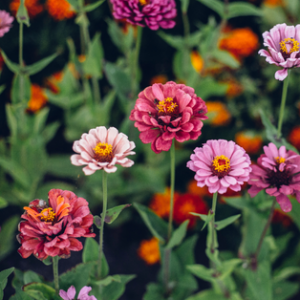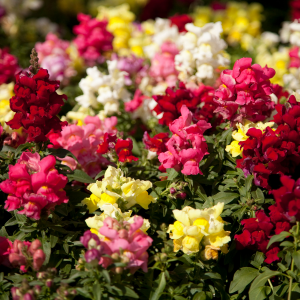Summer brings long, sunny days and plenty of opportunities for outdoor enjoyment, but it also presents challenges for gardeners. High temperatures, intense sunlight, and dry conditions can stress plants, leading to wilting, sunburn, and even death. To keep your garden thriving through the heat, here are some essential tips for protecting your plants from summer’s scorching temperatures.
 1. Watering Wisely
1. Watering Wisely
Effective watering is crucial during the summer heat. Water your plants deeply and less frequently to encourage deep root growth, which makes them more resilient to drought conditions. Early morning is the best time to water, as it allows foliage to dry before the sun is at its peak, reducing the risk of fungal diseases. Avoid watering in the evening, as prolonged moisture on leaves can lead to mildew and other issues.
2. Mulching
Mulching is one of the most effective ways to protect plants from summer heat. A 2-3 inch layer of organic mulch, such as straw, wood chips, or shredded leaves, helps retain soil moisture, regulate soil temperature, and suppress weeds. Mulch also adds organic matter to the soil as it decomposes, improving soil health and structure. Be sure to keep mulch a few inches away from plant stems to prevent rot.
3. Shade Solutions
Providing shade can significantly reduce heat stress on your plants. Use shade cloth, garden fabric, or even an old bedsheet to create temporary shade structures for sensitive plants during the hottest part of the day. You can also strategically place taller plants to provide shade for smaller, more vulnerable ones. For potted plants, move them to shaded areas or use umbrellas and awnings to protect them from direct sunlight.
4. Proper Plant Placement
When planning your garden, consider the heat tolerance of different plants and place them accordingly. Heat-loving plants like tomatoes, peppers, and succulents can be placed in full sun, while more delicate plants like lettuce and spinach may benefit from partial shade. Grouping plants with similar water and light needs can make watering and shading more efficient.
 5. Soil Health
5. Soil Health
Healthy soil is better able to retain moisture and provide nutrients, helping plants withstand heat stress. Incorporate organic matter, such as compost or well-rotted manure, into your soil to improve its water-holding capacity and fertility. Healthy soil also promotes strong root growth, which is essential for plants to access deep moisture during dry spells.
6. Hydrating Plants
During extreme heat, foliar feeding with a diluted liquid fertilizer can provide a quick boost of nutrients to stressed plants. Be sure to apply it early in the morning or late in the afternoon to avoid leaf burn. Anti-transpirants, which are products that reduce water loss from plant leaves, can also be sprayed on plants to help them conserve moisture.
7. Wind Protection
Hot, dry winds can exacerbate heat stress by increasing evaporation from soil and plant surfaces. Protect your plants by using windbreaks, such as fences, hedges, or temporary barriers like burlap screens. For small or delicate plants, individual cloches or plant protectors can provide additional shelter from drying winds.
8. Regular Monitoring
Keep a close eye on your garden during hot weather. Check soil moisture regularly, and look for signs of heat stress such as wilting, yellowing leaves, and sunburn. Promptly address any issues by adjusting watering schedules, providing additional shade, or applying mulch. Consistent monitoring allows you to respond quickly to your plants’ needs and prevent heat-related damage.
9. Choosing Heat-Tolerant Varieties
When selecting plants for your garden, opt for heat-tolerant varieties whenever possible. Many modern cultivars have been bred specifically to withstand high temperatures and drought conditions. Native plants are also excellent choices, as they are adapted to the local climate and typically require less water and care.
10. Container Care
For container gardens, be extra vigilant. Pots can heat up quickly and dry out faster than garden beds. Use light-colored containers to reflect heat, and consider double-potting by placing a smaller pot inside a larger one with an insulating layer of mulch or straw in between. Ensure good drainage to prevent waterlogged roots and regularly check soil moisture levels.
By following these tips, you can help your garden thrive even in the hottest months. Proper watering, mulching, shading, and soil care are key strategies to keep your plants healthy and productive throughout the summer. With a little extra attention, your garden can be a vibrant oasis despite the heat.



